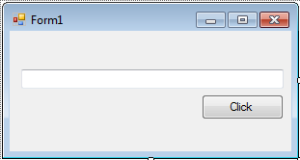How to Create a Simple Autonumber in the TextBox in VB.net
This tutorial is all about How to Create a Simple Autonumber in the TextBox in VB.net.
Today, I’m going to teach you how to create an autonumber in the TextBox. It auto generates the number in the TextBox every time you click the Button.
This is very important, why? Because this number serves as your primary key. For instance, when saving the data or record in the database you have to put a specific I’d number so that, the data or records will not be redundant when retrieving it from the database.
What is Visual Basic’s purpose?
The third-generation programming language was created to aid developers in the creation of Windows applications. It has a programming environment that allows programmers to write code in.exe or executable files.
They can also utilize it to create in-house front-end solutions for interacting with huge databases. Because the language allows for continuing changes, you can keep coding and revising your work as needed.
However, there are some limits to the Microsoft Visual Basic download. If you want to make applications that take a long time to process, this software isn’t for you.
That implies you won’t be able to use VB to create games or large apps because the system’s graphic interface requires a lot of memory and space.
Furthermore, the language is limited to Microsoft and does not support other operating systems.
What are the most important characteristics of Visual Basic?
Microsoft Visual Basic for Applications Download, unlike other programming languages, allows for speedier app creation. It has string processing capabilities and is compatible with C++, MFC, and F#.
Multi-targeting and the Windows Presentation Framework are also supported by the system, allowing developers to create a variety of Windows apps, desktop tools, metro-style programs, and hardware drivers.
Let’s begin:
Open the visual basic. After that, add a button and a textbox in the form.
After arranging the Button and TextBox, double click the button to fire the click event handler. Then, put the code into it.
[vbnet]
Private Sub Button1_Click(ByVal sender As System.Object, ByVal e As System.EventArgs) Handles Button1.Click
'DECLARE A VARIABLE FOR STORING NUMBER
Dim inc As Integer
'STORE A NUMBER WHICH IS 1 TO A VARIABLE THAT YOU HAVE DECLARED
inc = 1
'THIS FORMULA WORKS FOR INCREMENTING A VALUE THAT'S IN THE TEXTBOX.
inc = inc + Val(TextBox1.Text)
'PUTING THE VALUE OF A VARIABLE IN THE TEXTBOX
TextBox1.Text = inc
End Sub
[/vbnet]Every time you click the button, the number in the TextBox will be incremented by 1.
Press F5 on the keyboard to run your project.
Readers might read also:

